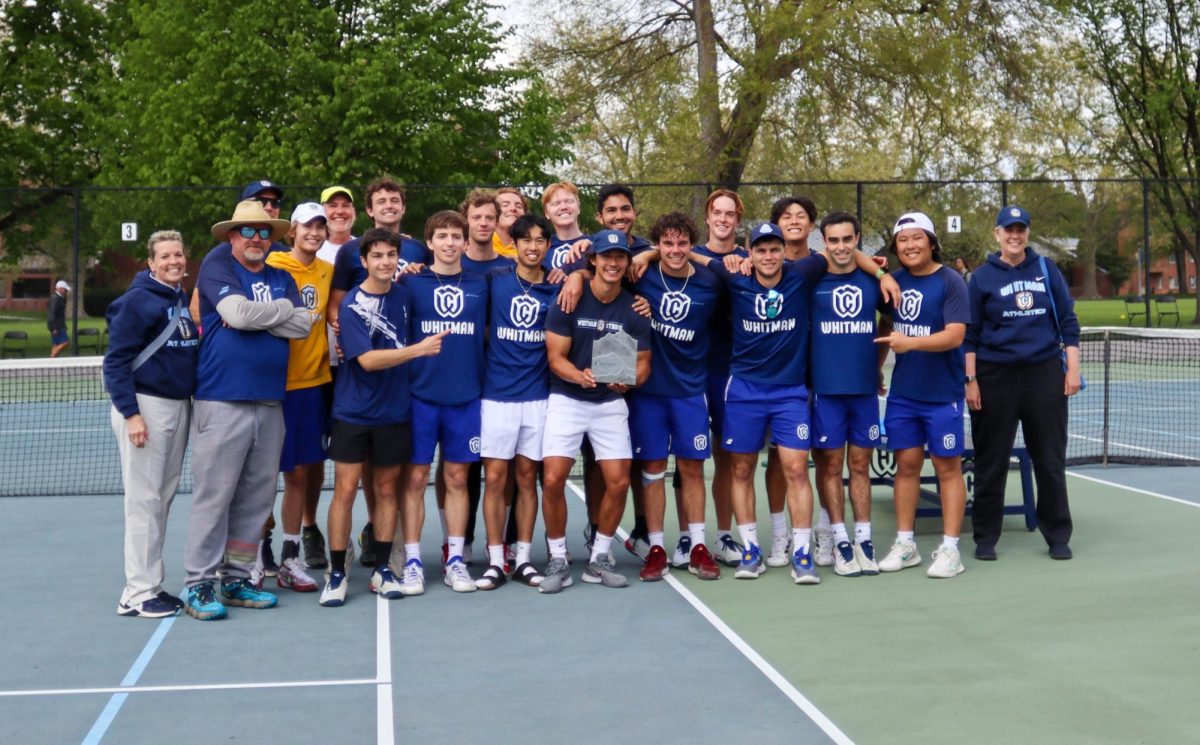Whitman’s sparkling blue Baker-Ferguson pool is an incredibly versatile body of water that provides students, staff and community members with a variety of opportunities to get involved in water-based activities on campus.
The walls of the pool are lined with whitewater kayaks and gear. The kayaks are used during the week for beginning kayak classes, twice-weekly for open kayak sessions for all interested students and occasionally for kayak polo. Even swimming lessons for the community are offered by members of the varsity swim team.
Swimming lessons
Students on the varsity swim teams host an annual week of swimming lessons for the community.
“The Whitman swim team does lessons as a fundraiser,” said sophomore swimmer and lesson teacher Melanie Notari. “One week in spring and possibly more in the fall next year. We had a ton of kids at lessons [this year], and even some adults.”
This opportunity provides for a lot of memorable experiences for both teachers and students. Notari highlighted a few of her favorite memories from swimming lessons in the Whitman pool: “Teaching a four-year-old girl to swim freestyle with side breathing, or getting my coach’s daughter to go underwater.”
Swim classes
Kevin Howard, the assistant varsity swim coach, teaches a swimming and conditioning class two days a week. This class consists of students of all levels and ages, and focuses on both technique and conditioning on alternating days.
“We do a day of all technique and . . . a light practice to build up some endurance and conditioning,” said Howard.
Kayak classes
It is not just swimming that occurs at the pool; true to Whitman’s outdoorsy character, elements of outdoor activities are manifested even in the indoor pool. In Beginning Kayaking, students develop their skills in the pool before getting the opportunity to test their skills in the outdoors: the class has excursions every semester to different locations, depending on the season.
“In the spring we have a lot of water coming out of the Blue Mountains, so we have more options than we do in the fall. In the fall we go to the Salmon River. You can build a lot of skills in the pool,” said kayaking instructor Stuart Chapin, who is also the Assistant Director for the OP. “You can use the skills you develop in the pool to work with the current, but it also takes some significant practice.”
As Beginning Kayaking begins to gain in popularity, there have been plans to add a new intermediate class next spring. “I am scheduled to run an intermediate class next spring, I am really excited about that,” said Chapin.
Open Kayak
In addition to the classes, a group of skilled kayaking students also host open kayak sessions to help their fellow Whitties increase their skill in a kayaking, an event which is open to any and all students who are interested.
“I teach Open Kayak on Monday nights . . . when people show up, we show them what they want to learn,” said sophomore Michael Jorgensen, also a member of the varsity cross-country team.
The number of students who attend these sessions varies, as does their level of expertise.
“Typically [there are] six or 10 people, or sometimes four to five. It runs the whole spread, usually one or two people who are brand new who are learning how to roll,” said Jorgensen.
Open Kayak sessions are always eager to welcome new attendees. “People go to the pool to learn how to roll, and have fun, so they can feel more comfortable on the river. This is a very safe and very controlled environment; they can go back to their dorm and have a hot shower right afterwards,” said Jorgensen.
Kayak Polo
Kayak polo is another popular event that occurs in the pool about once every two weeks, during an open kayak session. Teams of three to five people attempt to throw a water polo ball into rectangular goals suspended eight feet above the pool deck. “It . . . works kind of like ultimate Frisbee with kayaks and balls, instead of cleats and Frisbees,” said Chapin.
Like in water polo, when a player has the ball, they are not allowed to paddle forward, but kayak polo also involves tipping the boats of opponents paddling frantically.
“It is a lot of ramming boats,” said Jorgensen. +


